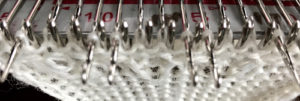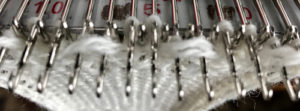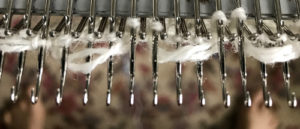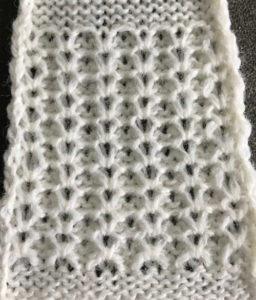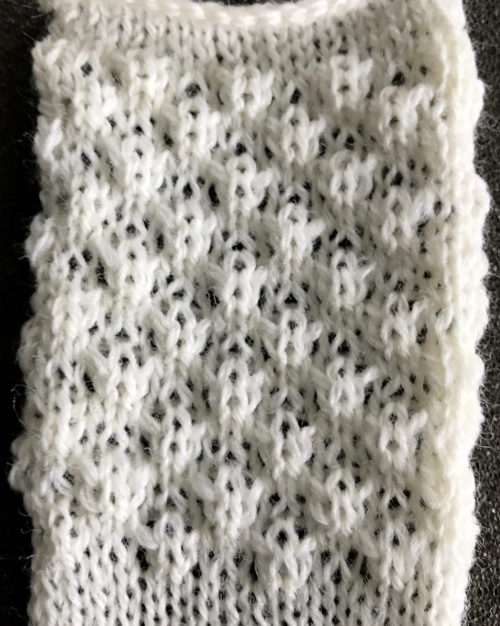A quick post to address another question:
Two cards that meet limitations on fabrics with side by side tuck stitches when using Japanese machines
Side by side tuck loops create floats similar to those created by slip stitch; the yarn is held in the needles however, so they are longer than those in slip stitch, which are simply not worked and travel in front of gate pegs. In Brother KM, the non selected needles tuck
In the card above left, after tucking for 2 rows, the needles are all selected forward in order to knit across the next whole row (every square punched). This is the result as needles come forward, illustrating some of the potential problems and limitations with wider or longer “tucks”

